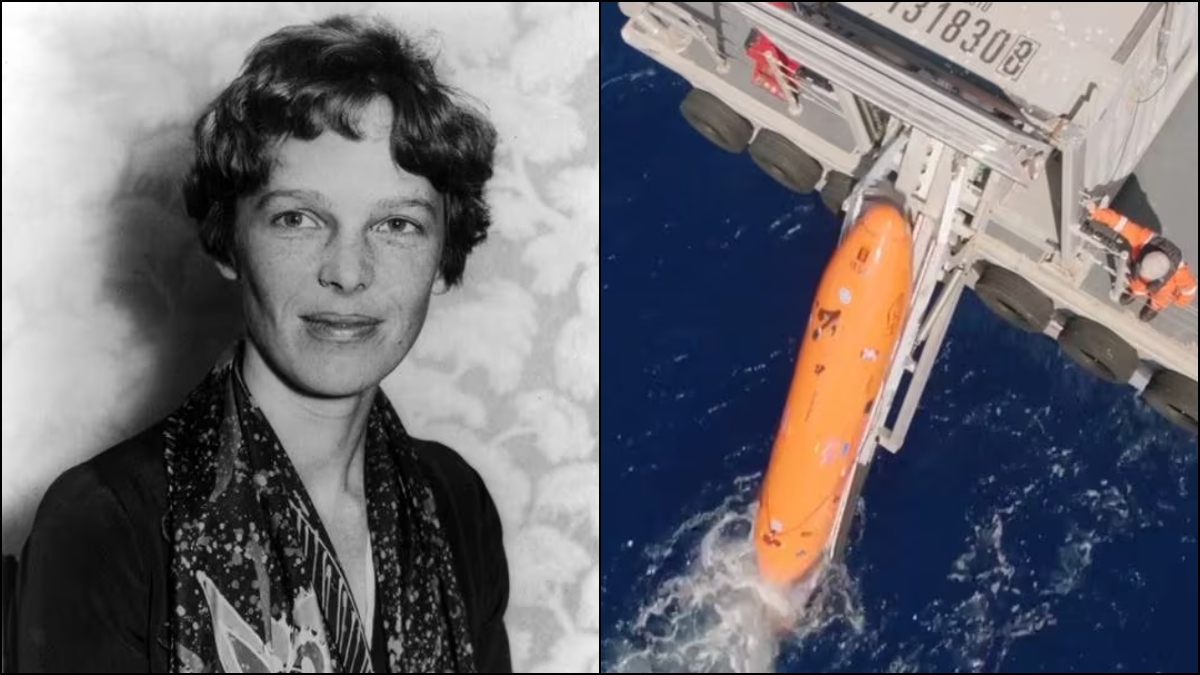The mystery that has haunted the world for nearly nine decades may finally be solved. Researchers have identified a strange and compelling object in satellite images of Nikumaroro Island, a remote atoll in the western Pacific, that could be the long-lost Lockheed Electra flown by Amelia Earhart. After 88 years of speculation, the elusive plane that vanished without a trace in 1937 may finally be within reach.
Amelia Earhart, a trailblazing aviator and one of history’s most iconic explorers, disappeared during her ambitious attempt to circumnavigate the globe. Her fate has remained one of the 20th century’s most tantalizing enigmas: Did she crash into the ocean? Was she stranded on a remote island? For decades, countless expeditions failed to yield any conclusive evidence—until now.
The object, visible in both recent high-resolution satellite imagery and grainy 1938 aerial photographs, appears to match the exact dimensions of Earhart’s Electra. Dubbed the “Taraia Object,” it has sparked excitement among historians, scientists, and aviation enthusiasts worldwide. A team of 16 experts from Purdue University, in collaboration with the Archaeological Legacy Institute, is preparing for a full-scale expedition to Nikumaroro this November. Equipped with advanced sonar equipment, underwater scanning tools, and historical data, the team hopes to examine the site with unprecedented precision.:max_bytes(150000):strip_icc()/Earhart-743095x-56aa22575f9b58b7d000f83f.jpg)
Unlike previous searches, which often relied on guesswork and limited technology, this expedition combines meticulous archival research with cutting-edge science. Decades of maps, eyewitness reports, and historical records have been cross-referenced to pinpoint the most probable crash site. For the first time, hope feels tangible: we may finally uncover what happened during Earhart’s final, fateful flight.
If confirmed, the implications would be monumental. Artifacts recovered from the site could shed light not only on the aircraft’s final moments but also on Earhart’s courageous struggle for survival. Every rivet, every fragment could reveal a new chapter of the aviator’s story, offering insight into her resourcefulness, determination, and the challenges she faced alone on the open Pacific.
Experts, however, caution against premature celebration. The “Taraia Object” could prove to be a natural formation, debris from another wreck, or a complete red herring. Yet the possibility of finally solving one of the greatest aviation mysteries has reignited global fascination, inspiring amateur sleuths, historians, and adventurers alike.
As the countdown to the expedition continues, the world waits with bated breath. Could this be the moment when history finally closes the book on Amelia Earhart’s disappearance? Or will Nikumaroro once again keep its secrets hidden? One thing is certain: the search is a tribute to Earhart’s indomitable spirit, a testament to human curiosity, and a thrilling journey that connects past and present in the relentless pursuit of truth.
Stay tuned, because the coming weeks may finally reveal the fate of a legend—and the world may witness history unfold before our very eyes.





